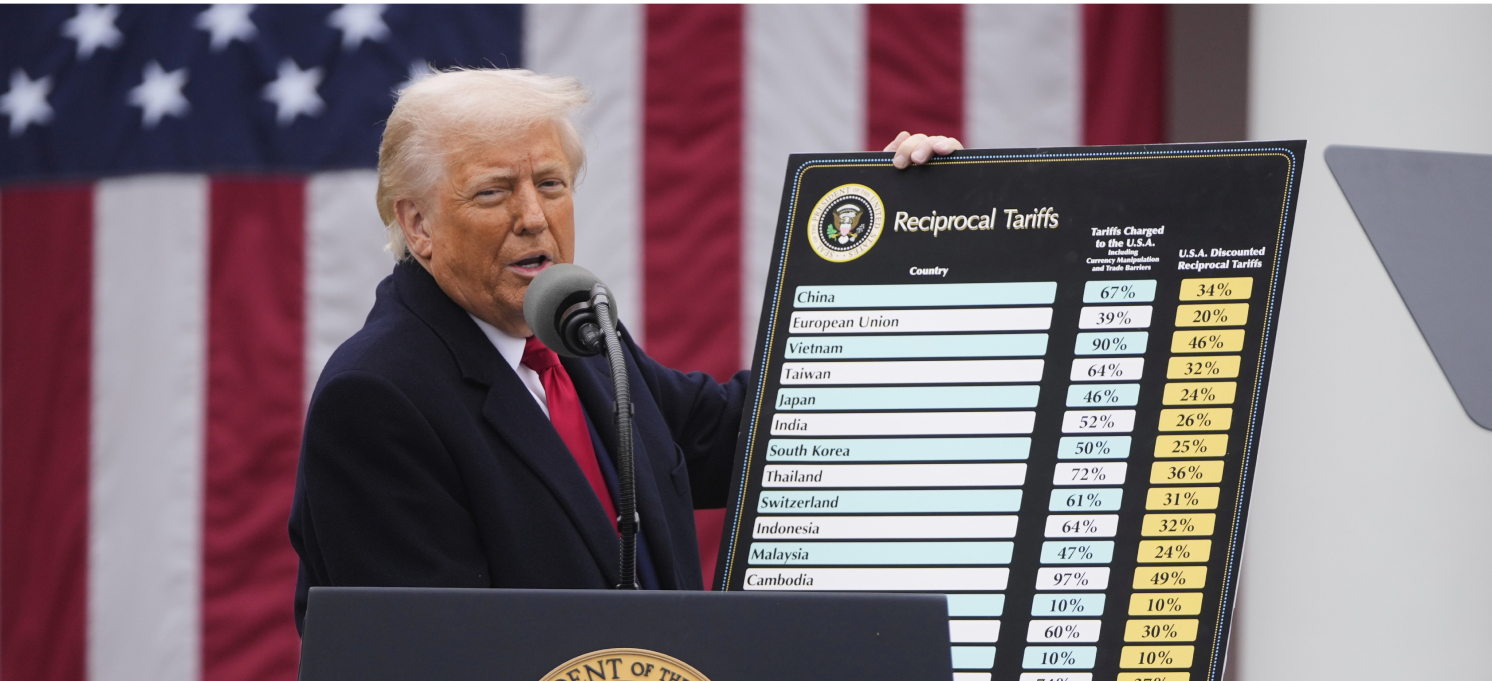
Russia’s oil sector reels from US sanctions
Hello! Welcome to your weekly guide to the Russian economy – written by Alexandra Prokopenko and Alexander Kolyandr and brought to you by The Bell. This week we look at the impact of tough new U.S. sanctions on Russia’s oil sector. We also analyse the state of Russian agriculture using data released at the end of last year.
The US imposes toughest sanctions yet on Russian oil
Ten days before the end of Joe Biden’s presidency, the White House imposed its toughest sanctions on Russian oil. Two of Russia’s five biggest oil companies – Surgutneftegaz and Gazprom Neft – went on the blacklist, along with Sovcomflot, the largest transporter of Russian oil, insurance companies Ingosstrakh and Alfastrakhovaniye, and more than 240 vessels. This package, combined with a further half-billion dollars of military aid for Kyiv, is intended to strengthen Ukraine’s negotiating position ahead of Donald Trump’s inauguration.
What’s going on?
Late on Friday afternoon, the U.S. Treasury's Office of Financial Action task force (OFAC) and the State Department announced a new package of sanctions on the energy sector – just as U.S. media had been reporting since December. This raft of restrictions from the outgoing Biden administration was expected to be powerful; Biden no longer has to worry about his political decisions pushing up gas prices for U.S. motorists.
For the first time since the full-scale invasion of Ukraine, Washington has imposed direct sanctions against some of Russia’s top five oil companies. Up to now, that was taboo: even companies as objectionable as state-owned Rosneft are still not affected by U.S. sanctions. From today, the following were added to the blacklist:
- Surgutneftegaz and Gazprom Neft, ranked third and fourth in Russia for oil extraction, along with dozens of subsidiaries as well as personal sanctions against Vladimir Bogdanov and Alexander Dyukov, heads of Surgutneftegaz and Gazprom Neft respectively;
- The heads of other energy companies: Alexei Likhachev of Rosatom, Vadim Vorobyov of Lukoil, Nail Maganov of Tatneft, Zarubezhneft’s Sergei Kudryashov and also Yusuf Alekperov, son of Lukoil’s co-owner Vagit Alekperov;
- Insurance companies Ingosstrakh and Alfastrakhovanie;
- Shipping company Sovcomflot, the biggest carrier of Russian oil;
- 183 vessels believed to be part of the “shadow fleet” that transports Russian oil;
- About 20 foreign trading companies that are selling Russian oil;
- Dozens of officials in Russia’s Energy Ministry.
Up to now the U.S. has stopped short of direct sanctions against Russian oil, concerned about pushing up gas prices and inflation. In 2022, when sanctions were first discussed, the U.S. and Europe disagreed on how to reduce Russia’s energy revenues. Taxes make up a large share of European fuel prices, so they are less susceptible to global market fluctuations. However, Europe is more reliant on Russian crude, which led to the half-hearted introduction of a price cap of $60 per barrel on Russian oil. Up to now, that has not been enormously effective, as we discussed in detail here.
Now, the Biden administration has nothing to lose. Surgutneftegaz and Gazprom Neft are the first Russian oil majors to face such draconian U.S. sanctions and the United Kingdom joined the measures on the same day. In effect, this prevents any entity in the world from doing business with these companies (unless they’re ready to risk U.S. secondary sanctions).
How tough are these sanctions?
Putting Surgutneftegaz and Gazprom Neft on the sanctions list sounds like a big deal. However, sanctions against these two will only have a short-term impact on Russian exports. In total, Surgutneftegaz and Gazprom Neft contribute less than half of the entire volume of oil exported in Russia, making it possible to create schemes whereby their oil is exported via other companies. One such scheme would be for Russia’s sanctioned companies – at least on paper – to operate exclusively on the domestic market, while the unsanctioned companies trade at home and abroad. Another option would be to create a new company which can purchase oil from sanctioned companies within Russia, then sell it for export.
Sanctions against the tankers could be more significant. About 7% of the global tanker fleet is now on the U.S. sanctions list. Among them are huge Panamax and Aframax vessels, as well as much smaller tankers. A rough calculation suggests that these sanctions affect vessels carrying 3% of all the world’s oil – that’s a lot. Not surprisingly, oil prices immediately shot up (a barrel of Brent cleared $80 for the first time since October), as did shipping costs.
For Russia, the loss of 183 tankers is a big blow. Now, these ships can only carry sanctioned oil, and only to ports that are unconcerned about secondary U.S. sanctions.
China looks likely to observe the U.S. restrictions. The day before the U.S. announcement, China’s Shandong Port Group stopped tankers under U.S. sanctions from calling at its Qingdao, Rizhao and Yantai ports on the east coast. These ports handle much of China’s oil imports from Russia, Venezuela and Iran.
How will this affect the Russian economy?
The sanctions will push up costs and reduce profits from oil exports, and that will only be partly recovered through increased prices. Another consequence will be disruption to the payment systems set up by Russian companies via intermediaries often associated with exporters. Under these systems, importers pay in rubles within Russia, the intermediary transfers them to exporters who use the foreign currency from the exports to purchase goods for import. Now, parts of this scheme will be disrupted.
As a result, Russian export income will decline, and import prices will go up. That could further weaken the ruble (as we saw in November after sanctions were imposed on state-owned Gazprombank). In turn, that will add further inflationary stimulus, forcing the authorities to choose between interest rates that stifle the civilian economy, or rising prices.
Why the world should care
These sanctions will not remove Russian oil from the market, nor will they reduce exports. But they will drive up costs, reducing profits and overall oil revenues, which remains hugely important for the Russian budget. They will also weaken the ruble, and fuel inflation. This will be painful for Russia’s slowing economy, and may become a bargaining chip in peace negotiations in Ukraine.
Data shows Russia’s agricultural sector is struggling
At the end of last year, Russia’s State Statistics Service (Rosstat) released data on the country’s agricultural performance in 2024. It showed that Russia’s grain harvest was less than in 2023, and well below expectations. Things aren’t due to improve this year. For an economy grappling with high inflation and record interest rates, it’s a significant problem.
What’s going on?
Rosstat released preliminary data on Christmas Day showing that Russia’s grain and vegetable harvest amounted to 125 million tons (including 82.4 million tons of wheat). That’s down 14% on 2024 when the yield was 144.9 million tons, including 98.2 million tons of wheat. Harvests were down for all crops except rice and soybeans. A week earlier, President Vladimir Putin had said that the harvest would come in at 130 million tons.
While Russia’s 2024 vegetable harvest was substantially unchanged, two important crops were significantly down. Beetroot fell to 41.9 million tons from 53.1 million the year before, and potatoes dropped to 18 million from 20.2 million the year before.
The harvest is expected to dwindle further this year. Leading grain consulting company SovEcon has lowered its projected wheat harvest to 78.7 million tons for 2025 – the lowest level since 2021, and well below the five-year average of 88.2 million tons.
Why is this happening?
The poor harvest is not just down to bad weather (a long period of drought and an unseasonable frost in May), but also man-made factors. According to SoEcon head Andrei Sizov, the underlying reason is “the impoverishment of the Russian farmer.” Sizov points to a drop in profitability due to the imposition of export tariffs and restrictions that the government imposed tol increase domestic supply, and help prices from increasing too fast. Russia introduced export tariffs on grain and sunflower seeds in 2021. And since the full-scale invasion of Ukraine, export restrictions and price regulation have increased.
At the same time, Sizov says, costs in agriculture have increased: “Due to the strengthening U.S. dollar and the increase in the recycling fee, prices for equipment are up; seeds and agricultural chemicals are more expensive due to government restrictions on imports. Plus, as in the rest of the economy, labor costs are increasing.” As a result, farmers have to economize on everything, which causes shortfalls amid adverse weather.
Wheat prices in Russia have increased by almost a third this year, largely due to the weakening ruble and rising global prices. Russian wheat exports increased in the first half of the year as sellers sought to sell more grain abroad before the imposition of new export tariffs. High interest rates meant there was an incentive to sell wheat and let their rubles pile up in savings accounts – rather than storing the wheat to sell later at higher prices.
How does this affect the economy?
Domestic prices for bread and flour are largely unaffected by wholesale wheat prices – because there are many other factors at play. Prices for fruit and veg are more dependent on the harvest. However, the size of the harvest does have consequences for inflation.
Since early 2022, food in Russia has seen double-digit inflation. In recent months the authorities allowed 38 regions to freeze prices on any food or non-food products. In the short term, these freezes will help to reduce prices but in the future it will boost supply, ushering in a new wave of price rises. That’s exactly what is happening with grain.
Why the world should care
Russia’s Central Bank has identified forecasts of reduced harvests and an imminent end to the duty free quota on chicken imports as potential drivers of rapid price growth. Don’t forget that the regulator expects prices to increase by up to 5% this year (and for interest rates to average somewhere between 17% and 20%. Analysts surveyed by the bank are more pessimistic: they expect average inflation to be 6% this year. Another poor harvest could make the reality even worse.
Further reading
Russia’s Economic Gamble: The Hidden Costs of War-Driven Growth



PAID SUBSCRIPTION LAUNCH
From May 1, 2025, The Bell in English will no longer be free
From May 1, 2025, all The Bell’s newsletters and online content will be behind a paywall. We have taken this decision so that The Bell can remain financially independent, and maintain our high standards of journalism and economic expertise





